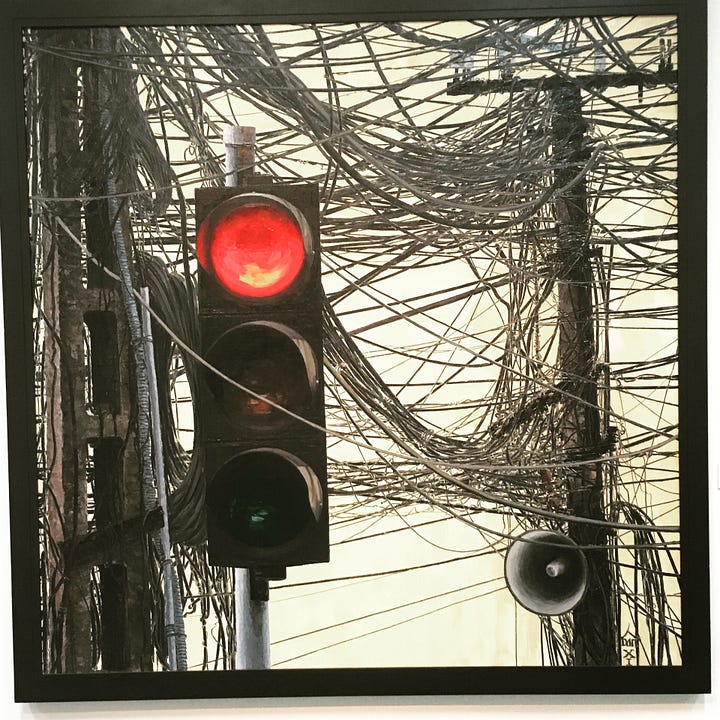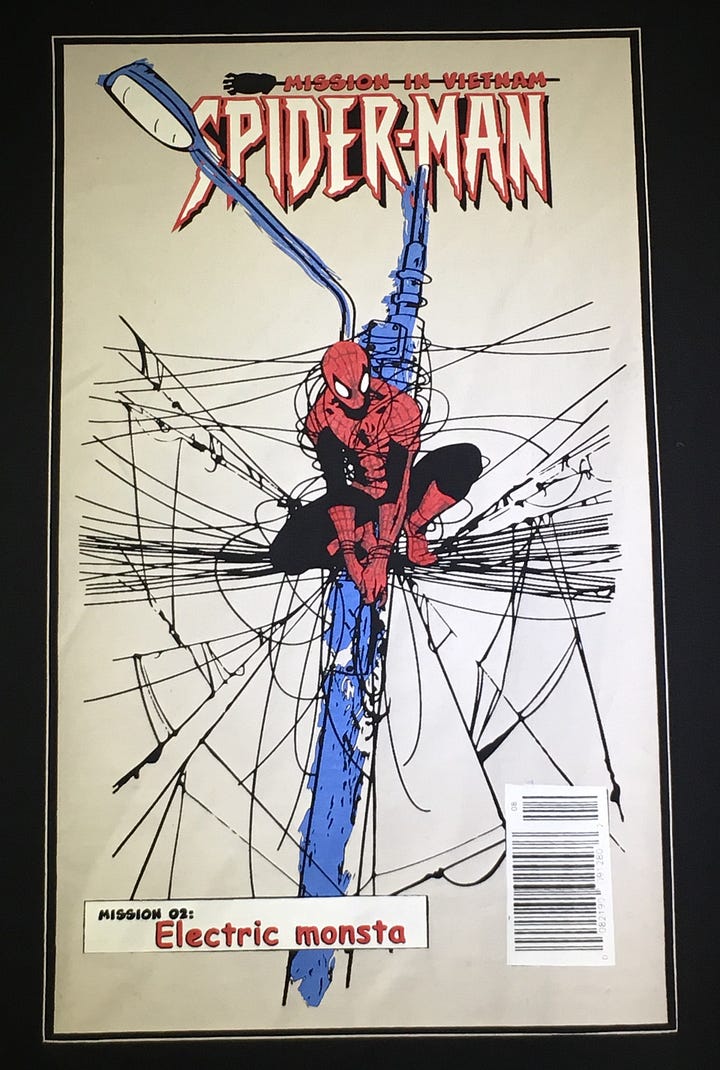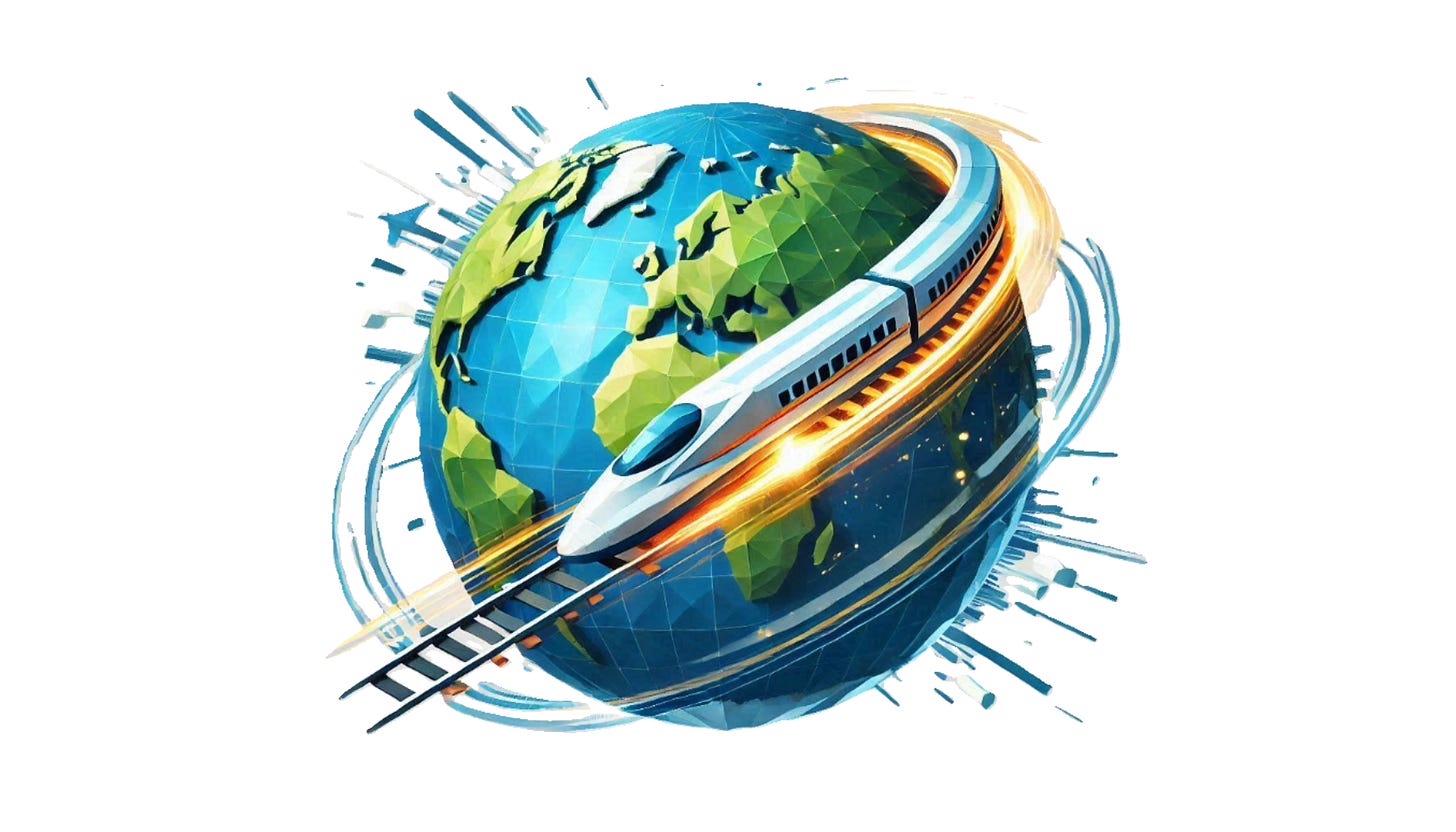Happy International Tech Day!
Also Merry Christmas eve eve eve eve, but that's boring
International Tech Day should be a holiday. International Cat Herders day made the cut (it was Monday) - surely we need a day to celebrate tech.
Tech is radically different around the world. Honestly it should be a new branch of anthropology.
You stagger off the long flight that brought you to a foreign land, scanning the concourse for a bathroom. You move with a sense of urgency. You find a bathroom and you’re relieved you understood the signs, and reassured that the airport doesn’t look so different from the one you started in. You take care of business - you pass your first international test.
The bathroom is your first glimpse that things are the same yet different. Bathroom stalls in Europe get the full privacy treatment (doors go all the way down to the floor and up to the ceiling). If you’ve made it to certain parts of South America or Southeast Asia, you may need to squat.
Biological functions sorted, you leave the safety of the airport for the final leg of your journey - maybe you’re headed to a hotel or to an office. Once you get out on the street, you start to get a sense that you’re not in Kansas anymore. Things are actually more than a little different.
This Vietnam, but I’ve also had the opposite experience leaving the Frankfurt airport on the autobahn with a tummy full of airport food churning while screaming down the autobahn at 100 MPH. You wish you were back in the safety of the airport bathroom.
Vincent Vega nails it in the opening scene of Pulp Fiction:
I mean they got the same shit over there we got here, but just … just there its a little different.
The Quarter Pounder becomes the Royale. Same with tech - different country, different culture - it comes out different, and not just the name.
Train à Grande Vitesse or TGV is some tasty French tech. A few weeks back I wrote about riding the metro in Paris with JFran on fancy trains. Sadly, I never got to ride the TGV. It’s a high speed train that runs between cities and it will smoke any train in America at speeds up to 200 MPH.1
TGV screams under the English Channel through the longest underwater tunnel in the world at a terrifying 30 miles long and 200 feet deep. AKA the Chunnel - you can get from Paris to London in a couple of hours. If I ever get back over there - I will take this ride.
Japan was notably first country to develop high speed rail technologies, pioneering the ‘Bullet Train’ or Shinkansen (it means new main line) back in the 60’s. The Shinkansen pioneered tech like electric motors and regenerative braking that are fundamental to electric vehicles today.
I did get to ride a Bullet Train from Tokyo to Hiroshima including a stellar view of Mount Fuji. That’s the trip I bought my favorite Green Skeleton. The train was cool and all, but it was eating through a bento box at max speed that seared it in my brain.
Japan held onto the tech train crown up until the 80’s when Europe started to update their extensive rail infrastructure. Guess who’s going gangbusters with the high tech trains now? If you read last week’s TechTale you guessed China and you’d be right. Around 10 years ago China started building out their Fuxing lines (it means Rejuvenation) and now China has the biggest and fastest network of trains approaching 300 MPH.
The next technology step for trains is maglev where friction is eliminated by superconducting magnets that levitate the trains so they hover just above the tracks. Crazy. Japan tested a maglev train at nearly 400MPH. I want to ride one of those; I’m sure a bento box is more yummy at 400MPH.
The US is a laggard when it comes to fast, efficient trains. Here in California, we’ve been trying to build a high speed train line from Los Angeles to San Francisco for ten years and nothing has happened except spending $10B on feasibility studies while the price doubles seemingly every year to where its now going to cost $100B and I doubt it ever gets done.2
We may suck at trains but as Vincent pointed out, we pioneered international fast food. It’s always odd to be an American roaming through an exotic foreign land and hey there’s a KFC. Oh goodie a Starbucks - only in France can you get a Macaron Frappuccino. International expansion is a common way for successful companies to get new market share, but it’s tricky and takes more than renaming stuff to pull it off.
Let’s stick with Japan, and look at IKEA, where it didn’t work out. IKEA is wildly successful with nearly 500 stores across the world. They all follow the same business model including making Swedish Meatballs an international delicacy. They do great in China with 37 stores.
But Japan - FAIL. Japan was IKEAs first try at expanding outside of Europe and they missed on a lot of levels including the size of the furniture, self service model at odds with Japanese culture and norms and finally lack of a distribution infrastructure. IKEA tried again 30 years later and figured out how to localize for the Japanese market; they have 13 stores in Japan today.
Localization is critical and it’s also leads to the creation of cool tech. From my seminal piece The Tyranny of Emojis:
Emojis came after Emoticons and were developed in Japan for an early texting system from Japanese telecom NTT. The word emoji is Japanese meaning ‘picture letter.” Similarity to the word Emoticon is a complete coincidence. It makes sense that Japan blazed the trail here as pictograms are long a part of Japanese writing as well, for example 川 or (kawa) is Kanji for River. Soon emojis were everywhere and Mark Zuckerberg got the 👍 to create the abomination that is Facebook.
We have Japan to thank for the emoji 🙏🏼
Speaking of emoji’s, let’s chat. Why do chat apps vary so much internationally? Text based comms are so basic, such a universal baseline of communications - yet chat apps, norms and use cases wildly differ depending on the country you’re in.
Outside the US, chat is used for so much more than keeping up with family and friends.
Keeping with Japan, everybody uses a chat app called LINE. It features stickers that are like emojis on steroids and its used for payments, news, business and disaster alerts. LINE was originally developed 2011 in response to the Tōhoku earthquake and tsunami when all the phones lines went down.
WhatsApp is the messaging app that drives everything in India and Brazil and lots of smaller countries especially in Africa and South America. WhatsApp is the biggest messaging app in the world. WhatsApp (the name is a play on Whats up?) was initially free and after that $1 per year year. It took off like mad in the early 2010s to get around SMS messaging charges. When it got ginourmous, Facebook, now Meta, bought it for $19 Billion. The founders got into it with Zuckerberg and left. WhatsApp now has nearly 3 Billion users. It’s super basic compared to LINE - no stickers - but its how every small business in these economies makes money online. It also features strong end-to-end encryption which is why some US users prefer it.
China once again goes BIG here with one chat app to rule them all - WeChat. Life in China revolves around WeChat and it’s used for everything by everybody including government services and communications. It’s a super app. You know the 100’s of apps you have on your phone? WeChat does all of that.
Want to know why? You’re going to want to sit down. The Great Firewall! That’s right, culture reverberates down through tech - just like the Great Wall, the Great China Firewall censures all internet traffic in and out of the country. More on firewalls here, but WhatsApp and every other non-Chinese app is prohibited inside of China.
If a foreign company - like Microsoft - wants to operate in China they have to work through a captive in-country Chinese service. TikTok is 100% a Chinese app built by Chinese tech company ByteDance. The ongoing fight by China to keep TikTok scrolling across US screens - now heading to the US Supreme Court - is peak irony.
Let’s close with an interesting dynamic where a less developed country’s tech can leapfrog a more developed one. One reason messaging apps became prevalent so fast in Asia and South America was their telecommunications systems were less developed, less entrenched.
It’s easy for wireless to replace wired services when said wires are this brilliant, messy, unmanageable chaos:




We’re out of time. I’m out of ink. My computer won’t type any more.
If you’re interested in a second International Tech Day, let me know. We’ve but scratched the surface.
best, Andrew
Amtrak averages 50MPH. There are some high speed lines in the Northeast, particularly the lines between Boston and Washington that average 80MPH.
There’s a bigger story here of Communism versus Capitalism and there’s a lot to it. It’s a story that will increasingly play out over the next few years and we’ll have a front row seat.





Good to learn about some of the Asian places. And the differences in tech around the world. 👍
I really want US rails to work better. I would absolutely travel the country by train a great deal over the next decade - nothing is better for furbaby travel, and seeing the country from a train is incredible. I have only taken one big US train trip ever ("big" by young Andrew standards, so from Richmond to Minneapolis), but would absolutely do more today in a heartbeat.